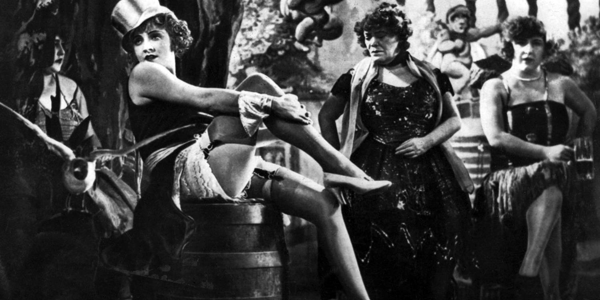// Archives
Weimar: Beyond Gloom and Glitter
June 27, 2013
Our view of Germany’s Weimar Republic (1919-1933) has been conditioned by its successor, the Third Reich. Weimar calls to mind images of decadence, the acidic cabarets of Berlin and the discordant songs of Weil and Brecht, not to mention the brutal visions of post-war degeneration and gluttony painted by George Grosz and Otto Dix. This …
Subscribe by email
About this blog
This blog showcases research in the Department of History, setting out key points and arguments and highlighting the relevance of historical events in today’s society.
Useful links
Recent posts
- Nick Thomas assesses the disjuncture between secondary and university History education in the UK
- David Gehring’s new article on Martin Luther in Lutheran Quarterly
- Maiken Umbach’s innovative new exhibit with the National Holocaust Museum
- Nathan Richards’s Film Project on Art and the Biafran War
- Festschrift (commemorative volume) for Emeritus Professor Michael Jones
Tag cloud
Art
Bible
British History
Cabaret
Catholicism
Cinema
Commemoration
Conservative Party
Democracy
Early Modern
France
Gender History
heresy
Heritage
Historiography
History of Religion
History of Sexuality
Islam
Knights of Labor
Legal History
local elections
Martin Luther
Michel de Montaigne
Music
Muslims
North Africa
oscar wilde
Police
Political History
Priapus
Public History
Public Memory
Reformation
Robert Peel
Russia
Test and Corporation Acts
Theatre
Tories
Trade Unions
Urban History
Victorians
Weimar
Witchcraft
Women
World War II
Recent Posts
- Nick Thomas assesses the disjuncture between secondary and university History education in the UK
- David Gehring’s new article on Martin Luther in Lutheran Quarterly
- Maiken Umbach’s innovative new exhibit with the National Holocaust Museum
- Nathan Richards’s Film Project on Art and the Biafran War
- Festschrift (commemorative volume) for Emeritus Professor Michael Jones
Archives
- June 2024
- April 2024
- March 2024
- November 2023
- July 2023
- June 2023
- March 2023
- February 2023
- January 2023
- November 2022
- October 2022
- August 2022
- December 2020
- September 2020
- May 2020
- February 2020
- November 2019
- October 2019
- January 2019
- December 2018
- November 2018
- October 2018
- June 2018
- May 2018
- April 2018
- March 2018
- October 2017
- April 2017
- March 2017
- February 2017
- January 2017
- October 2016
- September 2016
- July 2016
- June 2016
- May 2016
- April 2016
- March 2016
- January 2016
- November 2015
- October 2015
- September 2015
- July 2015
- May 2015
- April 2015
- March 2015
- February 2015
- January 2015
- December 2014
- November 2014
- October 2014
- July 2014
- May 2014
- April 2014
- March 2014
- February 2014
- January 2014
- December 2013
- November 2013
- October 2013
- September 2013
- August 2013
- July 2013
- June 2013
- May 2013
Categories
- Afghanistan
- Animals
- Art
- Austria
- Austro-Hungarian Empire
- Barrack Obama
- British Civil Wars
- British Empire
- British Empre
- British Royal Family
- Cathars
- Catholic Church
- Charles II
- China
- Cinema
- Climate change
- Cold War
- Communism
- conservatism
- Decolonisation
- Diplomacy
- Environmental history
- Fin de Siecle
- Foreign policy
- France
- Gender
- Germany
- globalization
- Heresy
- Historical geography
- History and theory
- Hitler
- Hungary
- Immigration
- International law
- Ireland
- Irish History
- Italy
- Labour history
- Liberalism
- Literary History
- Lord Byron
- maritime history
- Marriage
- medieval history
- medieval warfare
- Modernity
- Music
- Nationalism
- Natural History
- Nazis
- Personal ads
- pirates
- Political philosophy
- Politics
- Post-Conflict Culture
- Prisons
- public opinion
- Religion
- Restoration
- Russian Revolution
- Siberia
- Social history
- Species reintroduction
- Terrorism
- Theatre
- Trade Unions
- Tsarist Russia
- Uncategorized
- US Foreign Policy
- USA
- Venice
- Vienna
- War on Terror
- Weimar Republic
- West Indies
- World War One


Recent Comments